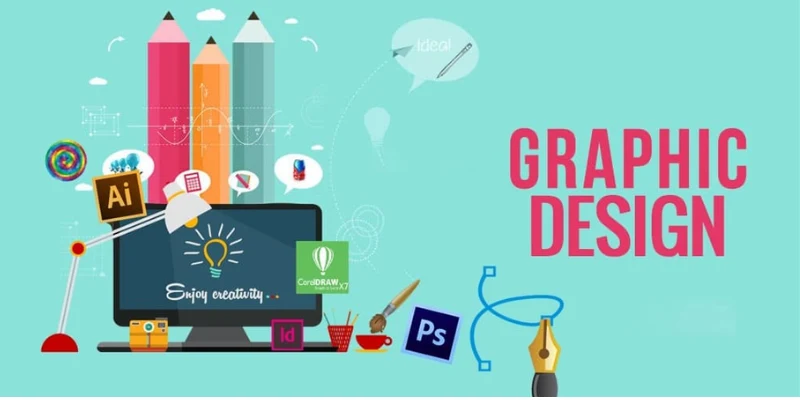
Graphic design is a powerful tool for visually communicating ideas. Whether you’re designing a logo, website, brochure, or social media content, selecting the right graphic design style is essential to how your message is received. With a wide range of styles to choose from, the process can be overwhelming. Enrolling in Graphic Design Courses in Dindigul at FITA Academy can help you gain clarity and hands-on experience in identifying the most effective styles. This guide will walk you through various graphic design styles, share tips on choosing the right one, and present inspiring graphic design examples to guide your creative direction.
Understanding the Importance of Graphic Design Styles
Before diving into how to choose the right one, it’s essential to understand what graphic design styles are. A design style refers to the visual language or aesthetic approach used in a piece of work. This includes elements like color palettes, typography, textures, shapes, and overall layout. Your chosen style directly affects the tone and message of your design.
For example, a sleek and clean layout may suit a technology brand, while a retro and colorful aesthetic might work better for a vintage clothing store. Looking at graphic design examples can help you visualize the impact of various styles.
Explore Popular Design Styles
There are countless design styles in the world of visual communication, each with its own unique appeal. If you’re looking to explore and master these styles, enrolling in Graphic Design Courses in Jaipur can be a great step. These courses offer hands-on experience and insights into popular and trending design aesthetics, helping you build a strong foundation in visual storytelling.
Minimalist
Characterized by simplicity, clean lines, and lots of white space. This modern graphic design style is perfect for brands that want to appear sleek, sophisticated, and contemporary.
Retro and Vintage
Inspired by the past ,especially styles from the 1950s to 1980s this style uses nostalgic elements like bold fonts, aged textures, and old-school color palettes. Graphic design examples of this style often evoke emotion and a sense of familiarity.
Illustrative
This style uses hand-drawn or digital illustrations as central design elements. It adds a personal and creative flair, making it ideal for storytelling or branding in creative industries.
Flat Design
A subset of modern graphic design, flat design focuses on clean, two-dimensional elements without any gradients or shadows. It’s commonly used in UI/UX design and digital platforms.
Abstract
An artistic and often experimental style that focuses on form, color, and pattern over literal representation. It’s frequently used in music, art, and fashion-related content.
By exploring these graphic design styles, you’ll be better equipped to identify what resonates with your brand or project.
Match the Style to Your Brand Identity
Your visual identity should be consistent with your brand’s personality and core values. Whether you’re designing for a startup, a non-profit, or a luxury brand, your chosen design styles should align with your tone of voice, mission, and audience expectations.
A luxury fashion brand may benefit from a minimalist, high-end aesthetic, while a children’s toy company might lean into colorful, illustrative styles. Choosing the right graphic design styles enhances brand recognition and builds trust.
Evaluate the Context and Platform
Different platforms demand different approaches. A billboard ad will require bolder visuals than a mobile app interface. Likewise, social media content may lean towards trendier and more dynamic styles, while a formal business presentation might need a more structured layout.
Understanding where your design will live can help narrow down your options. You can analyze platform-specific graphic design examples to determine what works best in each setting.
Experiment and Stay Flexible
Design isn’t a one-size-fits-all process. Even within a single project, you might use a combination of design styles to express different ideas or emotions. Try creating multiple drafts using different aesthetics and gather feedback from your team or audience.
Review various graphic design examples in your niche to inspire new ideas or blend styles creatively. Often, innovation lies in the combination of unexpected elements.
Know the Types of Graphic Design
Enrolling in Graphic Design Courses in Delhi can deepen your understanding of various design approaches and help refine your personal style. Understanding the different types of graphic design is essential in making informed style choices. Here are some of the major categories to explore and master through structured learning.
- Branding and Visual Identity: Logos, brand guidelines, business cards
- Marketing and Advertising: Posters, flyers, digital ads
- UI/UX Design: App interfaces, web design
- Packaging Design: Product labels, boxes
- Motion Graphics: Animated videos, gifs
- Publication Design: Magazines, eBooks
Each type may require different graphic design styles, so being aware of your project’s category can significantly influence your decision-making process. Choosing the right graphic design style is about more than just aesthetics; it’s a strategic decision that impacts how your message is perceived. By understanding your audience, aligning with your brand identity, evaluating the design platform, and studying graphic design examples, you can make informed and impactful design choices. Simple And Impressive Graphic Design Techniques while the Canva AI generator provides templates that align with current trends. Together, these tools act as creative collaborators rather than replacements, making design more accessible and dynamic.
Also check: Increasing Demand of Graphic Designing as a Career
